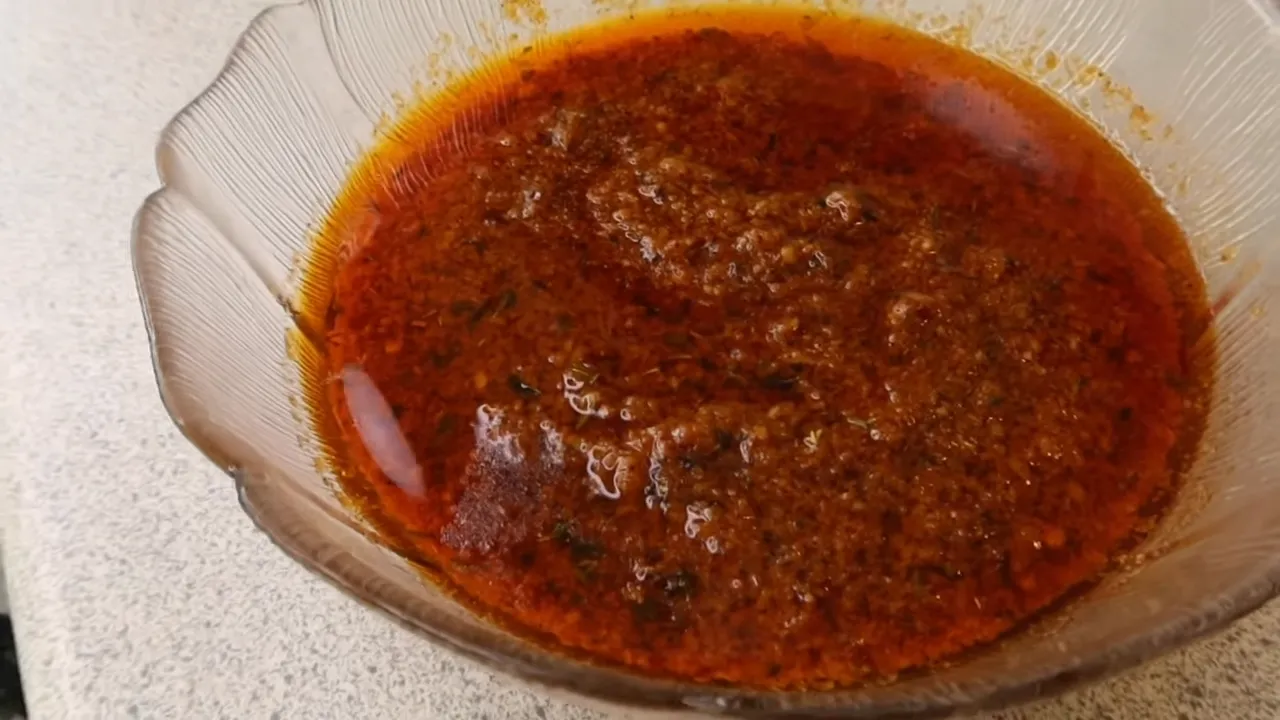Introduction to Seafood Boil Sauce
Seafood boil sauce is an integral component of the seafood dining experience, providing a rich, flavorful complement to a variety of oceanic delights. Originating from the coastal regions where seafood is a staple, this sauce combines a melange of spices and ingredients to elevate dishes to new heights. Perfect for seafood boils that feature crab, shrimp, crawfish, and more, this sauce is celebrated for its versatility and ability to enhance the natural flavors of seafood.
The essence of seafood boil sauce lies in its foundation of butter and garlic, with layers of flavor added through spices such as Old Bay, cayenne pepper, and sometimes even unique additions like lemon juice or brown sugar. The result is a sauce that’s not
just a side but a crucial part of the meal, turning a simple seafood dish into a memorable feast.
Key Ingredients for Seafood Boil Sauce Recipe
To create a tantalizing seafood boil sauce, you’ll need:
- Butter: The base of the sauce, providing richness and depth.
- Garlic: Adds a pungent, aromatic flavor that’s unmistakable.
- Onion: Offers sweetness and texture to the sauce.
- Old Bay Seasoning: A classic seafood spice mix that brings warmth and complexity.
- Lemon Juice: Brightens the sauce with a touch of acidity.
- Cayenne Pepper and Red Pepper Flakes: Introduce heat to the sauce, adjustable to taste.
- Chicken or Fish Broth: Thins the sauce slightly, adding another layer of flavor.
These ingredients come together to form a sauce that’s both intricate and comforting, with the ability to tailor the spiciness to personal preference or dietary needs.
In the next sections, we’ll cover the essential equipment for preparing the sau
ce and provide a step-by-step guide to cooking it to perfection.
Preparation Equipment
To make your seafood boil sauce, you’ll need a few basic kitchen tools to ensure a smooth cooking process. Here’s what to have on hand:
- Skillet: A medium to large skillet is essential for sautéing the garlic and onions and for combining all the sauce ingredients.
- Measuring Cups and Spoons: Accuracy is key when adding ingredients to your sauce. Measuring cups and spoons will ensure you get the right balance of flavors.
- Wooden Spoon or Spatula: For stirring the sauce, ensuring even cooking and preventing any ingredients from sticking or burning.
- Knife and Cutting Board: Needed for finely chopping or mincing the garlic and onion.
- Citrus Juicer: If you’re using fresh lemon juice, a juicer can help you extract the maximum amount of juice efficiently.
These tools are not only essential for making seafood boil sauce but are also versatile additions to your kitchen for a myriad of other recipes.
Step-by-Step Cooking Instructions
Creating the perfect seafood boil sauce involves a series of simple steps that build flavor layer by layer. Here’s how to get started:
- Melt the Butter: Begin by melting the butter in your skillet over medium heat. Adding olive oil helps prevent the butter from burning.
- Sauté the Aromatics: Add the finely chopped onions to the melted butter and cook until soft. Then, stir in the minced garlic and sauté until fragrant.
- Add the Spices: Introduce the Old Bay seasoning, lemon pepper, smoked paprika, chili powder, and red pepper flakes to the skillet. Stir well to combine the flavors.
- Pour in the Broth: Gradually add your choice of chicken or fish broth to the skillet, along with the lemon juice. This will not only add depth to the sauce but also help in achieving the desired consistency.
- Simmer: Allow the sauce to simmer gently, stirring occasionally. As it simmers, the sauce will start to thicken slightly. Adjust the heat as necessary to prevent any ingredients from scorching.
- Final Touches: After the sauce has simmered and thickened to your liking, remove it from the heat. This is the time to adjust the seasoning, adding salt or more spices according to your taste.
Throughout the cooking process, keep an eye on the sauce to ensure it doesn’t become too thick or thin. The goal is a rich, velvety sauce that clings to your seafood without overpowering it.
In the upcoming sections, we’ll discuss serving and pairing suggestions to help you make the most of your delicious seafood boil sauce.
Serving and Pairing Suggestions
Once your seafood boil sauce is ready, it’s time to think about the best ways to serve and enjoy it. This sauce is incredibly versatile, enhancing the flavor of a wide range of seafood dishes.
Serving Suggestions:
- As a Dipping Sauce: Serve the sauce in small bowls or ramekins on the side, perfect for dipping seafood like shrimp, crab legs, or lobster tails.
- Tossed with Seafood: For a seafood boil, toss the cooked seafood in a large bowl with the sauce until everything is well-coated. This method ensures every bite is infused with flavor.
- Over Pasta or Rice: For a heartier meal, drizzle the sauce over pasta or rice topped with your choice of seafood. The sauce adds a rich, savory element to these simple dishes.
Pairing Suggestions:
- With Crusty Bread: Serve warm, crusty bread on the side to soak up any extra sauce. The bread acts as the perfect vehicle for ensuring not a drop of sauce goes to waste.
- Fresh Vegetables: Pair your sauced seafood with fresh or lightly steamed vegetables like asparagus, green beans, or corn on the cob for a balanced meal.
- Wine Pairings: Choose a wine that complements the richness of the sauce. A crisp, dry white wine like Sauvignon Blanc or a Chardonnay can balance the sauce’s buttery and spicy notes.
Storage and Reheating Guidelines
To ensure your seafood boil sauce retains its flavor and texture, proper storage and reheating are crucial.
Storage:
- Refrigeration: Store any leftover sauce in an airtight container in the refrigerator. Properly stored, the sauce can last up to 5 days.
- Freezing: For longer storage, freeze the sauce in a sealed container. When ready to use, thaw it overnight in the refrigerator before reheating.
Reheating:
- Stovetop: Gently reheat the sauce in a saucepan over low heat, stirring occasionally until it’s warmed through. This method helps maintain the sauce’s creamy texture.
- Microwave: If in a hurry, you can also reheat the sauce in the microwave. Use a microwave-safe container and heat in short intervals, stirring in between, until hot.
These guidelines help ensure that your seafood boil sauce remains just as delicious the second time around, making it a convenient and flavorful addition to various dishes.
Customizing Your Sauce

The beauty of making your own seafood boil sauce is the freedom to adjust it according to your taste preferences or dietary needs. Here are some tips to customize your sauce:
- Spice Level: If you love heat, feel free to ramp up the cayenne pepper, red pepper flakes, or even add diced jalapeños for an extra kick. For a milder sauce, reduce the amount of these spices or omit them entirely.
- Dairy-Free Version: Substitute the butter with a high-quality vegan butter or use a neutral-flavored oil such as avocado oil. Keep in mind that changing the fat component will slightly alter the sauce’s flavor profile.
- Herb Infusions: Incorporate fresh herbs like dill, parsley, or thyme towards the end of cooking for a fresh, aromatic twist. Each herb offers a unique flavor that can complement the seafood differently.
- Citrus Variations: While lemon juice is traditional, try lime or orange juice for a different type of acidity and sweetness, adding a new dimension to the sauce.
These adjustments can help you create a sauce that not only complements your seafood boil but also aligns with your dietary preferences and taste.
FAQs About Seafood Boil Sauce
Q: Can I use pre-made seafood seasoning instead of individual spices? A: Absolutely! Pre-made seafood seasonings can be a convenient and quick way to add flavor to your sauce. Just be sure to taste as you go, as these blends vary in saltiness and heat.
Q: How can I make my seafood boil sauce thicker? A: To thicken your sauce, you can simmer it for a few minutes longer to reduce the liquid. Alternatively, a slurry made from cornstarch and water mixed in small amounts can thicken the sauce without altering the flavor significantly.
Q: Is there a way to make this sauce without butter for a healthier option? A: Yes, for a lighter version, you can reduce the amount of butter or substitute part of it with olive oil. Keep in mind that this will change the flavor profile slightly, but it can still be delicious.
Q: Can this sauce be made ahead of time? A: Definitely. Making the sauce ahead of time can actually deepen the flavors. Just store it in the refrigerator and gently reheat before serving. Avoid microwaving, as it can separate the butter.
Q: What are some ways to serve seafood boil sauce besides seafood? A: This sauce is versatile and can complement more than just seafood. Try it with grilled vegetables, as a dip for bread, or drizzled over roasted potatoes for a delicious twist.
More Tips for Perfect Seafood Boil Sauce
- Adjusting Consistency: If your sauce is too runny, a longer simmering time can help it reduce and thicken. For an instantly thicker sauce, a tablespoon of flour mixed into the butter at the beginning can create a roux, which thickens the sauce as it cooks.
- Enhancing Flavor: For an extra flavor boost, consider adding a splash of white wine to the sauce as it simmers. The wine adds acidity and depth, complementing the seafood wonderfully.
- Serving Temperature: Seafood boil sauce is best served warm. If it cools down and begins to solidify, a gentle reheat on the stove will bring it back to the perfect consistency.
- Healthier Alternatives: For those watching their caloric intake, substituting half the butter with a good quality broth can lighten the sauce without compromising too much on the richness.
Seasonal Variations of Seafood Boil Sauce
Embracing seasonal variations in your seafood boil sauce can add an exciting twist to your culinary creations throughout the year. Here’s how to adapt your sauce to the seasons:
- Spring: Incorporate fresh herbs like chives, parsley, or dill, which are abundant in spring. These herbs add a light, fresh flavor that complements the heavier butter base.
- Summer: Take advantage of summer’s bounty by adding a hint of citrus zest, such as lime or orange, to the sauce for a bright, refreshing taste. Summer is also perfect for adding a bit of spice to complement the warm weather.
- Fall: Introduce richer elements like roasted garlic or a dash of bourbon to give the sauce a warmer, deeper flavor profile, ideal for the cooler temperatures.
- Winter: Emphasize comfort by enriching the sauce with more butter or cream and adding heartier spices like smoked paprika or cumin, creating a cozy feel for winter meals.
By adjusting your seafood boil sauce with seasonal ingredients, you not only keep your meals interesting but also align your cooking with the natural rhythms of the year, enhancing the overall dining experience.
Conclusion
Experiment with different flavors and adjustments to find your perfect blend. Additionally, don’t hesitate to serve it with a variety of seafood dishes. Remember, the key to a great seafood boil sauce lies in balancing the richness of the butter, the tanginess of the lemon, and the heat from the spices. With a little creativity and experimentation, you’ll soon have a sauce that’s not only a hit with your seafood boils but also a cherished recipe in your culinary repertoire.
Enjoy the process of making and customizing your seafood boil sauce, and most importantly, enjoy the delicious flavors it brings to your table. @flavorflourish


